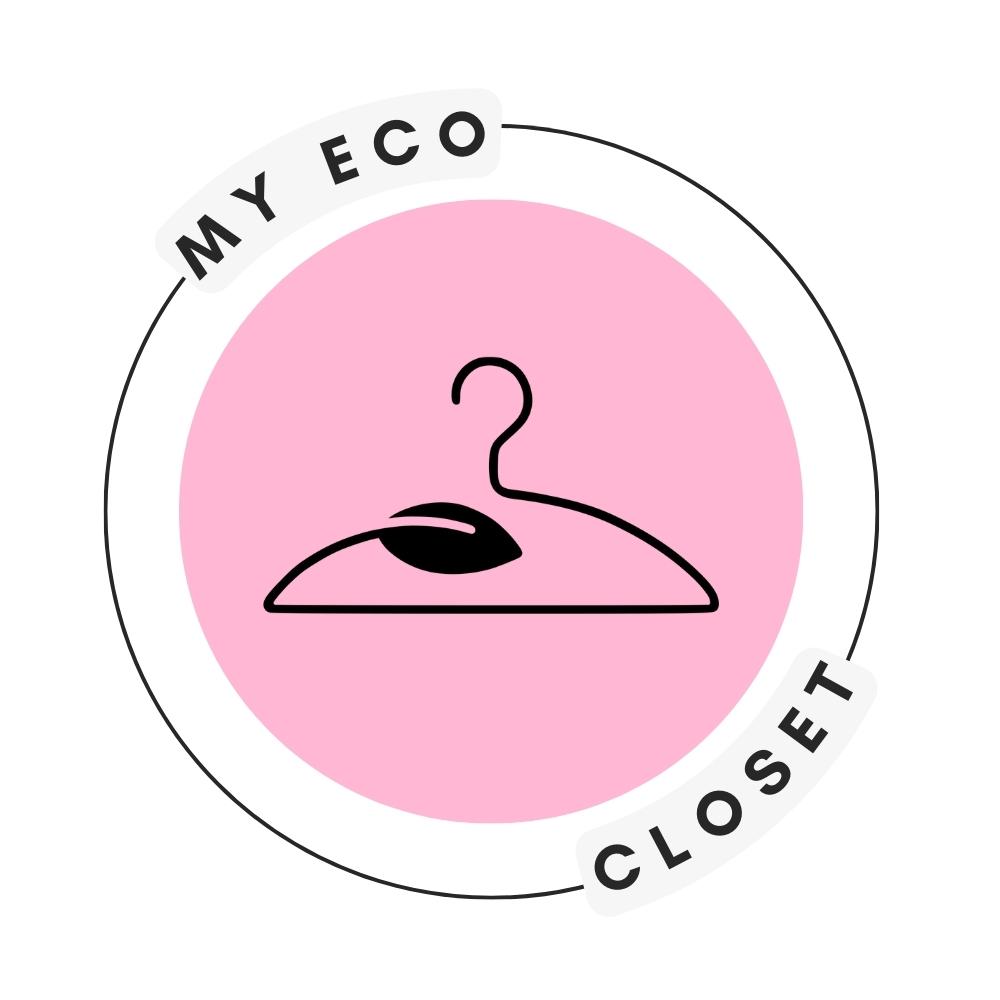An ancient animal-based fabric, silk provides a luxurious feel and breathability. However, many ethical issues arise in terms of its production. Luckily, peace silk embodies a cruelty-free alternative, which brings no harm to silkworms – so that you can embrace the benefits of the fabric without supporting animal violence.
In this guide, we will explore the manufacturing process behind peace silk, how it’s sourced, as well as some brands that embrace the material in their collections. Without further ado, let’s dive into it.
What is Peace Silk?
Known as ‘Ahimsa (non-violent) silk,’ peace silk is produced in a manner that allows the silkworm to escape after finishing its life cycle, rather than being terminated. Rajaiah Kusuma pioneered this fabric, which is celebrated for its ethical and cruelty-free qualities in silk textiles.
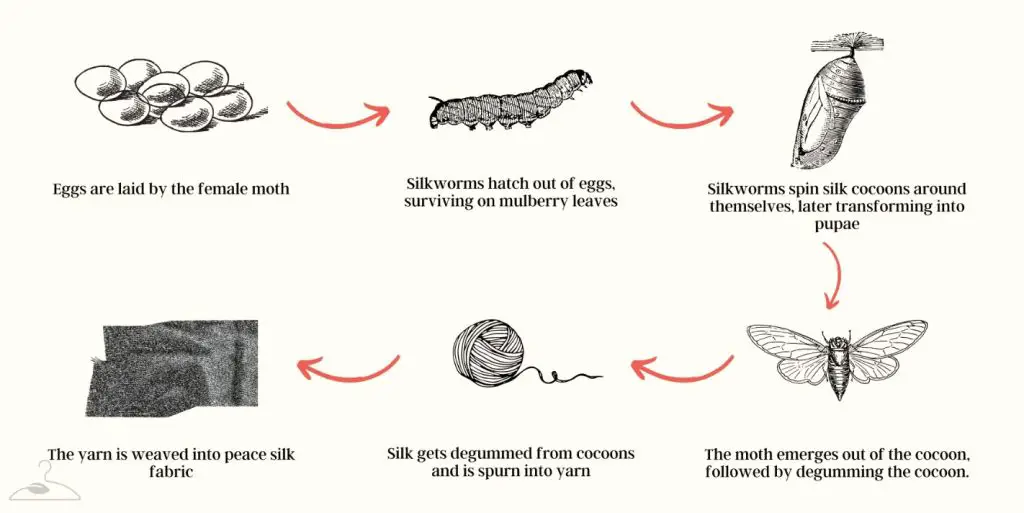
The History of Peace Silk, Also Known as Ahimsa Silk
Tracing the history of silk back to the ancient times, the fabric was discovered in 2640BC by Chinese Empress, Xi Lingshi who witnessed a lucky accident, where a cocoon fell from the mulberry tree into her teacup. For thousands of years, the Chinese kept the fabric as a secret, later introducing the cocoons to the world through the ‘silk road.’
When it comes to cruelty-free silk, in particular, the fabric was born out of Mahatma Gandhi’s environmental initiative. Up until its appearance, it was a common practice to kill thousands of worms for the sake of one kilogram of the fabric. Peace silk, on the other hand, refrains from harming the worms, revolutionizing silk production entirely.
Rajaiah Kusuma, the man owning the patent for cruelty-free silk, was born in a weaver’s family in India who paid homage to Gandhi and his concept of nonviolence. As Kusuma mentions, his mission is to avoid “killing millions of innocent silkworms” in the pursuit of human commercial gain.
Truly, with traditional production methods, the Bombyx Mori silkworm emerges from its eggs a week after incubation, forms cocoons within a month, and later gets boiled to terminate the pupae. In contrast, peace silk grants the pupae the extra time to develop into a moth, employing a more humane approach to silk production.
Currently, peace silk encompasses 20% of India’s total silk production and it’s slowly gaining global visibility.
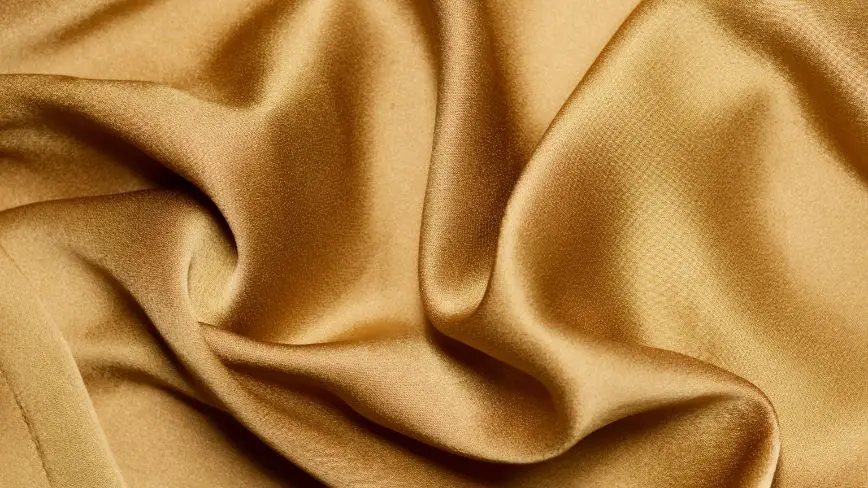
Why Is Peace Silk A More Sustainable Alternative?
Silk, an ancient textile originating in China around the 27th century BCE, has the potential to be a sustainable textile, as long as it retains its traditional production methods.
Unlike cotton and other plant-based textiles, silk sourced from the mulberry tree has a significantly lower environmental impact. The reason behind this lies in the special properties of the mulberry tree itself, which requires fewer fertilizers to grow and is resistant to pollution.
Truly, an average mulberry tree provides sufficient foliage for 100 silkworms, which facilitates mass-production of the silk fabric on a larger scale – in a remarkably low-impact manner. What’s more, silkworms are sensitive to chemicals, which is why many manufacturers refrain from spraying mulberry trees with harmful pesticides and fungicides.
However, there’s more to the picture. Peace silk is sustainable due to not only its ethical treatment of animals but also its small-scale, non-industrial approach, which preserves resources and plays a role in fostering a regenerative fashion industry.
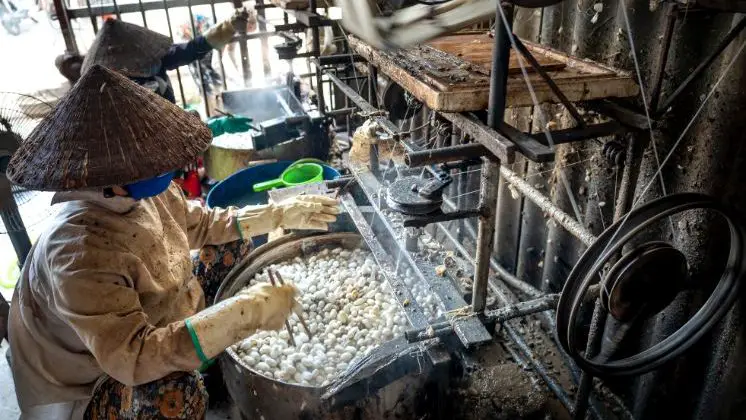
The Global Silk Industry: Monocultures, Toxins, And Resource Depletion
Depending on production methods, challenges arise when producing industrial silk. To achieve different colors, commercial silk incorporates toxic dyes, particularly, acid, creative, and metal complex dyes. These dyes later get dumped into the groundwater – in the form of wastewater, degrading the land and polluting local ecosystems.
The processing of conventional silk is energy-intensive. Silkworms are killed using boiling water and steam in factories powered by coal. So, cooking the cocoons inherently takes up a lot of resources – something that does not occur in Ahimsa silk production.
Most importantly, industrial silk leads to monocropping, where mulberry trees are grown repeatedly on the same territory. Allowing for extensive silk manufacturing, monocropping depletes the soil, decreases its fertility, and makes it more vulnerable to pests.
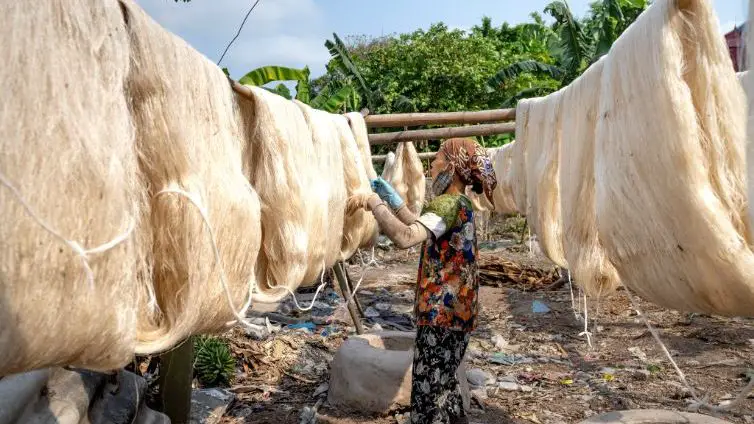
Regenerative Silk Production
Considering how detrimental the global silk industry can be, it’s important that we support peace silk producers. After all, the fabric works in perfect harmony with nature, as it’s associated with small-scale, local artisanship, where artisans employ regenerative practices, such as rotational cropping and intercropping.
Moreover, cruelty-free silk producers tend to incorporate natural, plant-based, vat dyes, such as Indigo, Cowdung, Myrobalan, Lac, Woad, and Tyrian purple, which boost the fabric’s regenerative nature.
PRO TIP: the term, organic silk, doesn’t guarantee the safety of the moth – it only indicates that the mulberry trees weren’t exposed to pesticides, which is generally the case, since pesticides would also harm the silkworms.
Special Properties: Thermoregulation, Moisture-Wicking, and More
Generally, peace silk blends easily with other fabrics, such as natural silks, cotton, jute, and wool. However, even by itself, the material provides unmatched sturdiness and warmth, akin to wool, while being the softest to the touch out of all silk textiles.
Unlike synthetic textiles, peace silk and silk, in general, feature a soft texture without a slippery feel. What’s more, they are incredibly thermoregulating, meaning they keep you warm in the winter and cool in the summer.
As compared to conventional silk, cruelty-free silk tends to be heavier and more matte.
On a molecular level, all silk fabrics are made of amino acid sequences, particularly, glycine, alanine, and serine, the content of which varies by the type of silk. Remarkably, the amino acid content is the highest in Eri Silk (>80%), alongside mulberry, Tasar, and Muga types of silk.
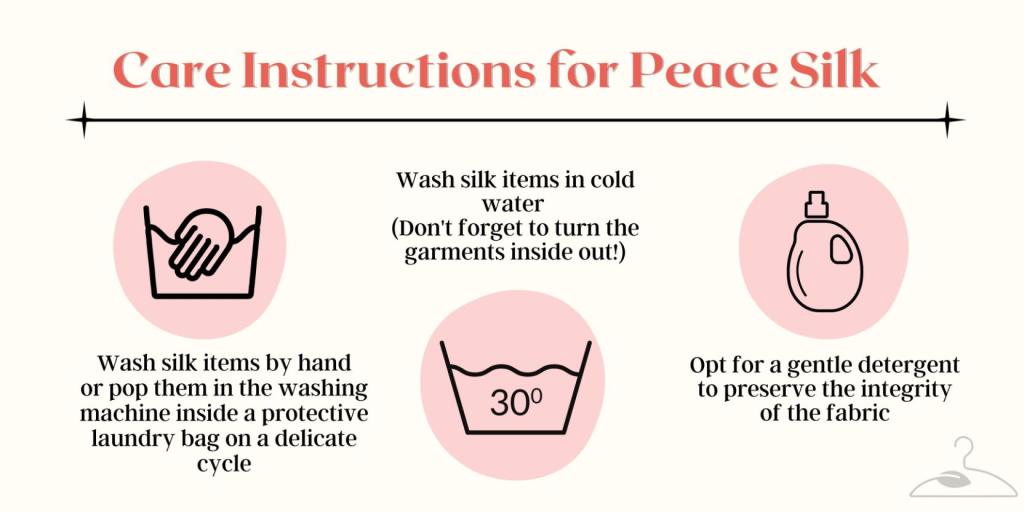
Care Instructions for Peace Silk
Like conventional silk, peace silk is prone to tearing and elemental damage. Sunlight tends to weaken its fibers easily, resulting in fading over time. Considering this, it’s crucial to follow the right care instructions to preserve the fabric in the long run.
First and foremost, you should wash the fabric by hand – even if the care label suggests to machine wash it. With a bit of toxin-free detergent, you should soak and gently hand-wash the fabric. Most importantly, refrain from twisting the fabric while washing in order to ensure its longevity.
Moreover, always remember to use a mild detergent and cold water when handling silk. If you don’t have a gentle detergent available at home, you can apply regular shampoo to the fabric – after all, just like your hair, peace silk is made of protein fibers.
Cruelty-Free Silk in Fashion: Stella McCartney
A luxury sustainable fashion brand, Stella McCartney paved the way for the use of peace silk in fashion, through her collaboration with Oshadi’s peace silk at the Commonwealth Fashion Exchange in 2018. McCartney presented a dress made of Ahimsa silk, featuring ancestral hand-weaving methods, eco-friendly, natural dyes, as well as local Indian craftsmanship, meeting all the requirements for a fully sustainable garment.
Unlike mass-produced garments, the Ahimsa silk gown necessitated a lot of manual labor and time to craft. To put things into perspective, a weaver can only make 5m of hand-woven peace silk with a hand loom in a day, as compared to hundreds and even thousands crafted by an industrial silk machine.
Lucy Tammam: Rebelling Against Conventional Silk
A London-based designer, Lucy Tammam also incorporates peace silk into her work, promoting ethical fashion before it gained widespread popularity. As Tammam mentions, the fabric is a type of “spun silk”, meaning it exhibits a lower shine, compared to its conventional, filament counterpart.
With her anti-fashion ethos, Tammam commits to two textiles only, cotton and peace silk, upholding her couture collections to the highest standards of sustainability.
With that said, the designer is optimistic about the growing prospects of cruelty-free alternatives. She notes that numerous traditional silk fabrics are now accessible in cruelty-free versions, which aligns with her philosophy around buying less but better.
